22 Flash Storage Products Heating Up The Data Center Market
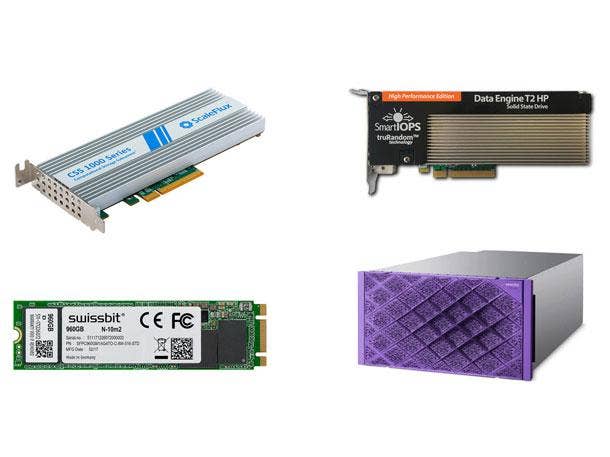
Flash On The Bleeding Edge Of Storage
Given the pace at which flash storage technology has become ubiquitous not only in high-performance primary storage applications but also in secondary storage and even the cloud, it's no wonder there is a conference dedicated to this fast-growing part of the IT industry.
That conference is the Flash Media Summit, an annual event held in August in Santa Clara, Calif. The FMS, as it is called, brings together a wide range of flash storage technologies from operating systems to SSDS and server-class memory to complete all-flash storage arrays from established and startup vendors.
CRN has brought together 22 products that were highlighted at this year's FMS, including the latest arrays, NVMe SSDs, and EDSFF (Enterprise and Datacenter SSD Form Factor) products. They are all united in three ways: they were introduced in the last four months, they were all flash-focused, and they were all at FMS. Many of these products were never seen before the conference.
Read on for the latest in flash storage.
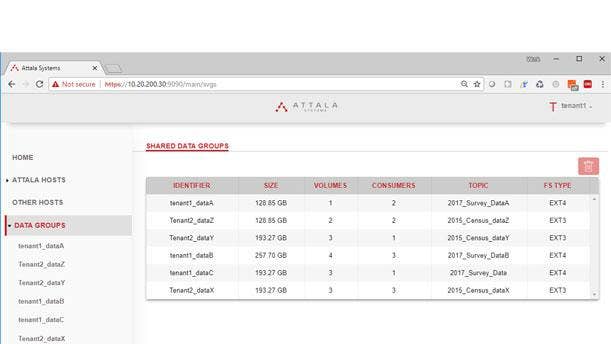
Attala Showcases Cross-Rack Scalability For NVMe Over Fabric
Attala Systems showcased its implementation for cross-rack, lossy networks via a way to utilize the speed and low latency of RDMA over Converged Ethernet, or RoCE, over large-scale networks. The San Jose, Calif.-based company worked with Sunnyvale, Calif.-based Mellanox Technologies to extend the reach of NVMe over RoCE (NVMe-oRoCE) networks with ordinary network interface cards and across lossy Layer 3 (L3) leaf-spine networks. The company said this will allow low latency and high performance on Ethernet networks at speeds from 10 GbE to 100 GbE and beyond.
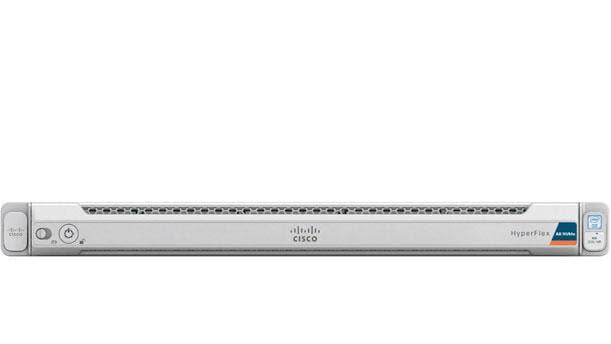
Cisco HyperFlex 3.5
Cisco highlighted the all-NVMe flash storage architecture of its Cisco HyperFlex 3.5 hyper-converged infrastructure offering, which was introduced in June. Cisco HyperFlex 3.5 uses Intel Optane in its HX220c M5 all-NVMe node, which the San Jose, Calif.-based company called the industry’s first fully engineered all-NVMe hyper-converged appliance. The nodes combine an Intel Optane NVMe caching drive as well as Intel 3-D NAND NVMe drives for capacity storage, with full RAS (reliability, availability, and serviceability) and hot- plug functionality.
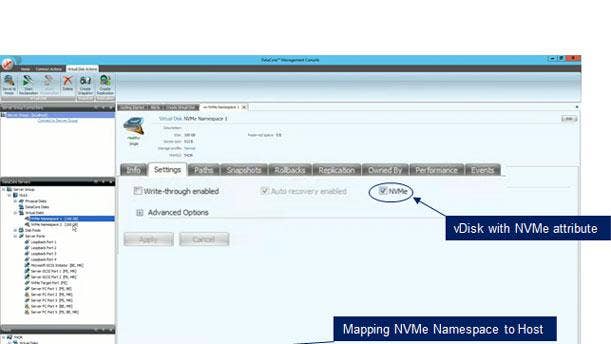
DataCore Software-Defined NVMe-Over-Fabric
Software-defined storage developer DataCore highlighted the enterprise data services of its latest technology, released in June, that provides provisioning and auto-tiering of any mix of NVMe or SCSI-based storage pools to Windows and Linux hosts. The Fort Lauderdale, Fla.-based company also unveiled new benchmarks for enterprise-class data services and storage using NVMe-over-Fabric technology, and showed its support for Broadcom's Emulex Gen 6 Fibre Channel Host Bus Adapters.
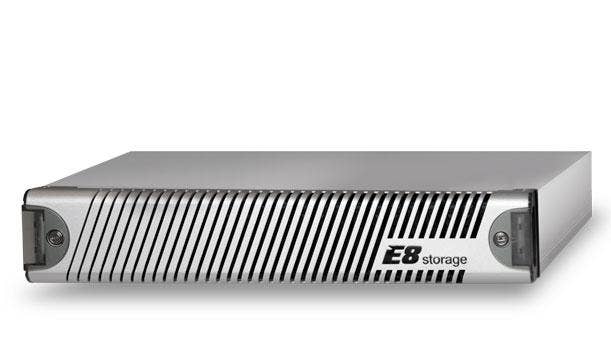
E8 Storage with SmartNIC Technology
E8 Storage showed how it leverages the capabilities of Broadcom Stingray and Mellanox BlueField technologies to deliver what the Santa Clara, Calif.-based company called the first integrated shared NVMe storage solution. The E8 Agent is integrated into a Mellanox SmartNIC storage fabric controller to provide high-speed, low-latency access to NVMe drives inside the E8 Controller. Together, they offer optimized computing resources to provide low-latency, high-throughput storage access and high availability, the company said.
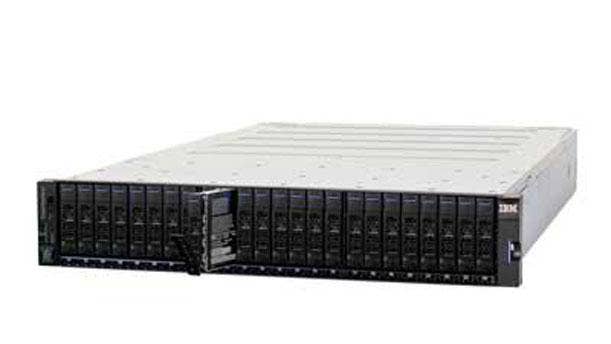
IBM FlashSystem 9100
IBM's FlashSystem 9100 all-NVMe storage system, introduced in July, supports IBM's proprietary high-performance FlashCore flash storage modules as well as industry-standard SSDs, and offers raw capacity of up to 460.1 TB, or up to 2 PB with data reduction, in each 2U enclosure. It is IBM's first array to feature new 2.5-inch FlashCore flash storage modules. The FlashSystem 9100 includes software that migrates data between arrays from multiple vendors without the need for a server between them, and provides unified cross-platform storage management and template-driven automation via APIs for DevOps teams. IBM also introduced three optional reference architectures to make the FlashSystem 9100 part of a multi-cloud offering.
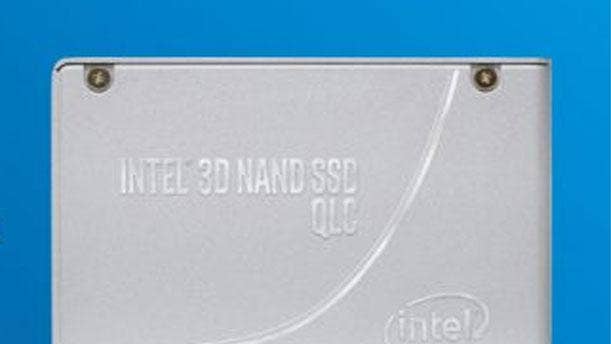
Intel Brings Optane, QLC Techs Together
Intel demonstrated it is combining two unique memory technologies, Optane SSDs and QLC 3D NAND, into a single architecture it said accelerates the performance of working with frequently accessed data while providing high-performance capacity storage.
Intel's Optane SSDs, introduced in 2017, use non-volatile memory technology to provide better performance than that of the NAND flash technology found in lower-cost SSDs. QLC, or quad-level cell technology, allows for the production of low-cost flash storage devices. Intel said that combining high-performance Optane SSDs with large-capacity QLC 3D NAND will let users get high-performance access and high-capacity flash storage.
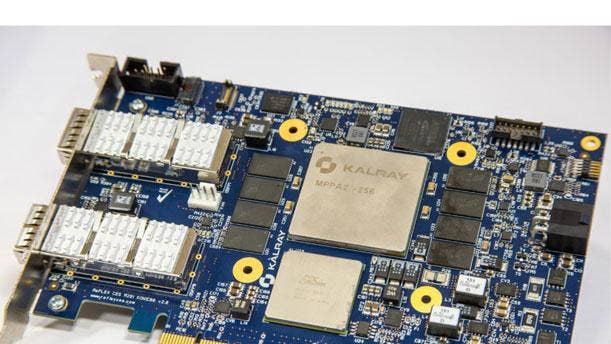
Kalray Target Controller Family
The Kalray Target Controller from Los Altos, Calif.-based Kalray provides an all-in-one system, including CPU, network interface card and software, to build optimized NVMe-over-Fabric JBOF (just a bunch of flash) modules.
KTC offers 100-plus compute cores to allow customers to add intelligence to their JBOFs, Kalray said at the Flash Memory Summit. This includes the ability to run IO-intensive applications close to the storage capacity, or add differentiating features including RAID/erasure coding, deduplication, compression or deep learning encryption.
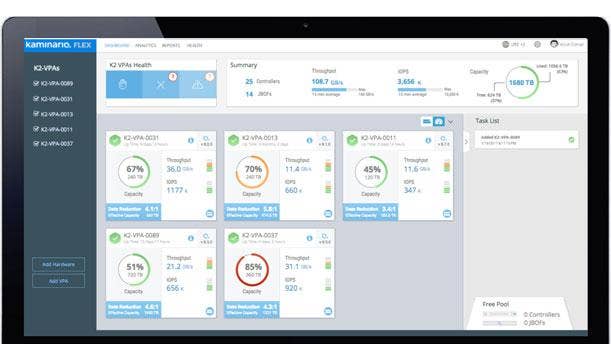
Kaminario Partners With Western Digital
Kaminario unveiled details about a partnership with Western Digital to design new offerings targeting cloud-scale data centers. These offerings combine Needham, Mass.-based Kaminario's composable data platform and San Jose, Calif.-based Western Digital’s new OpenFlex and Ultrastar storage platforms. Together, they allow cloud-scale application providers to take advantage of NVMe and NVMe-over-Fabric technologies to build IaaS and Paas offerings that enable dynamic composition, control, reconfiguration, and management of storage resources at the software layer.
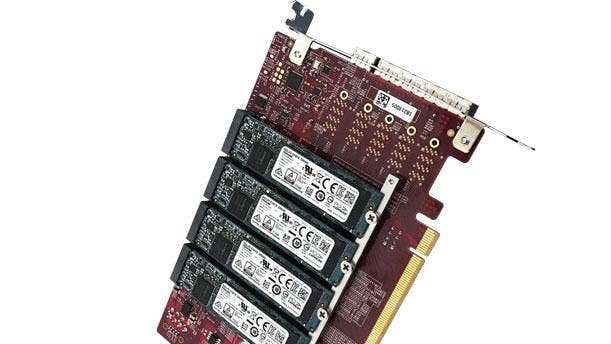
Liqid Element PCI-Express Gen 4.0 NVMe SSD
Liqid introduced multiple configurations of its new Gen 4 PCIe Element SSDs, including what the Broomfield, Colo.-based company called the industry’s first Gen4 x16 NVMe storage offering with dual-ported capability. Deployment of the Gen 4 PCIe specifications is expected to help accelerate applications across multiple industry verticals, with increased performance in cloud-centric and big data compute environments, the company said.
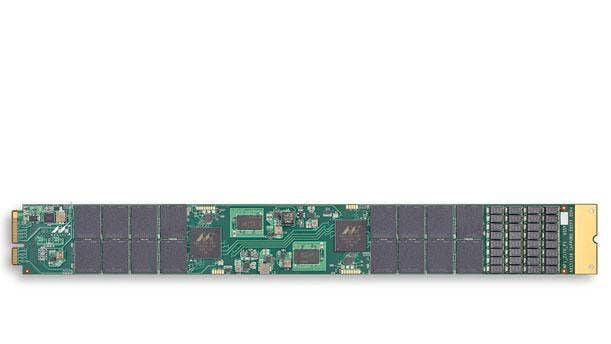
Marvell 88SN2400 NVMe-oF SSD Converter Controller
Semiconductor developer Marvell unveiled its new 88SN2400, which it terms as the industry’s first NVMe over Fabric (NVMe-oF) SSD converter controller for cloud and enterprise data centers. The Santa Clara, Calif.-based manufacturer said its new NVMe-oF SSD converter controller is targeted at organizations looking for cost-effective ways to strengthen their control over evolving compute and storage-intensive workloads.
Marvell also introduced new EDSFF reference architectures for building storage systems out of increasingly more densely packed, higher-capacity SSDs.
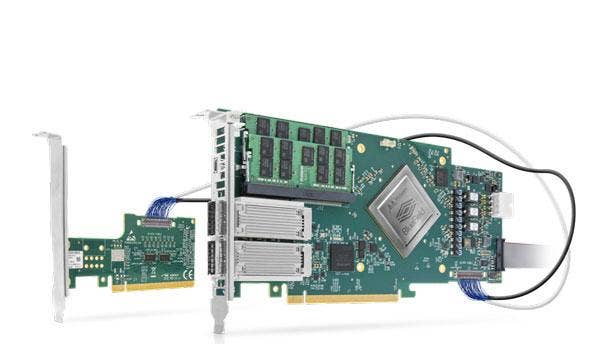
Mellanox BlueField BF1600, BF1700 Storage Controllers
The BlueField BF1600/1700 storage controllers from Sunnyvale, Calif.-based Mellanox deliver over 4 million IOPS with NVMe-oF with up to 200 Gbps of network and PCIe bandwidth and network ports that can be configured for either Ethernet or InfiniBand. They provide high-performance NVMe over RoCE, InfiniBand, and TCP/IP, and include smart offloads for storage including NVMe-oF, erasure coding, and T10-DIF data integrity signatures. The BlueField SoC integrates the ConnectX-5 network adapter with 16 64-bit ARM cores in a fully programmable environment for storage software such as compression, encryption, RAID and virtualization.
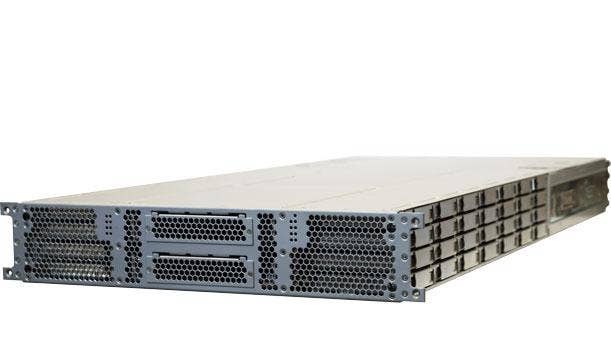
Newisys NSS2560
The Newisys NSS2560 from Newisys, the San Jose, Calif.-based division of contract manufacturer Sanmina, is an NVMe all-flash offering providing high storage density and capacity along with low latency in an efficient platform. The NSS2560, introduced in August, offers 50-GBps reads over four 100-GbE ports, 12.5 million IOPs (reads), and 64 Gbps of bandwidth to drives between two servers.
The system architecture offers 32 PCIe lanes to the NVMe drives, and 32 PCIe lanes to the network, all in a 2U form factor that houses up to 56 2.5-inch NVMe drive for total capacity of up to 1.68 PB.
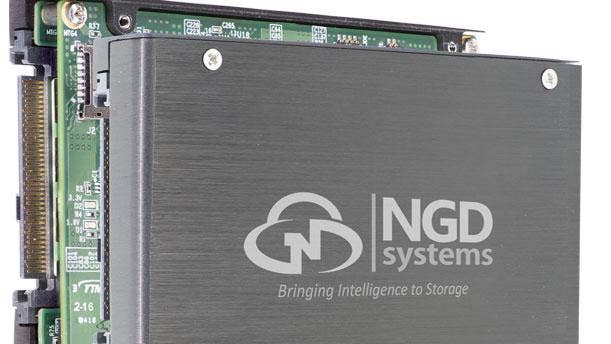
NGD Newport Platform of Computational Storage
NGD Systems, Irvine, Calif., introduced its Newport Platform of NVMe SSDs aimed at in-situ processing, or the movement of the processing to where the data is stored. The NGD ASIC-based controller provides a quad-core 64-bit ARM application processor subsystem that works with NVMe Gen 3 x4 SSDs to do data analytics within the storage device without the need for host RAM or CPU. Customers can use the Newport Platform in traditional and rack-scale storage solutions, U.2 (2.5-inch 15mm small form factor), M.2, and the newly announced EDSFF form factors. Capacities are available up to 64 TB.
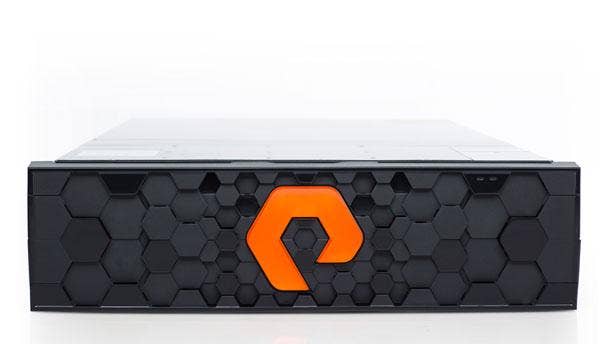
Pure Storage Shows Updated FlashArray//X
Mountain View, Calif.-based all-flash array vendor Pure Storage introduced its data center architecture based on the latest update of its FlashArray//X arrays. The latest FlashArray//X, introduced in May, includes the all-NVMe //X90, which features up to 3 PB of effective capacity in 6U. It also included the latest revision of the company's Purity Operating Environment software, which the company said features up to a 20 percent better data reduction over the previous version.
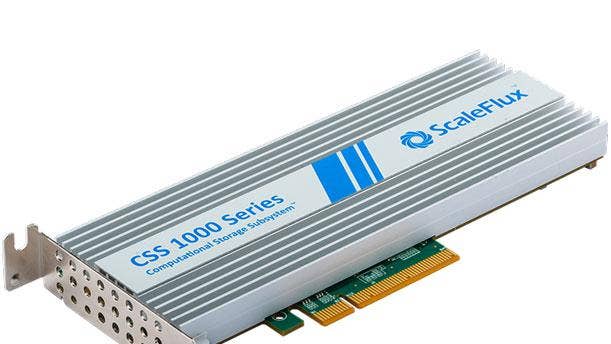
ScaleFlux CSS-1000
The new Computational Storage Subsystem CSS 1000 from San Jose, Calif.-based ScaleFlux, first introduced in August, comes in standard PCIe AIC or U.2 form factors that combine application compute engines with up to 8 TB of low-latency flash storage capacity. By bringing compute to the data, ScaleFlux said it delivers responsive performance, affordable scaling, and an agile platform for using flash storage with data-driven applications like transactional and analytical databases. The CSS 1000 targets hyper-scale, cloud, web-scale and enterprise data center environments, and includes VMware support, new flash technology support, and a customizable database compute acceleration engine.
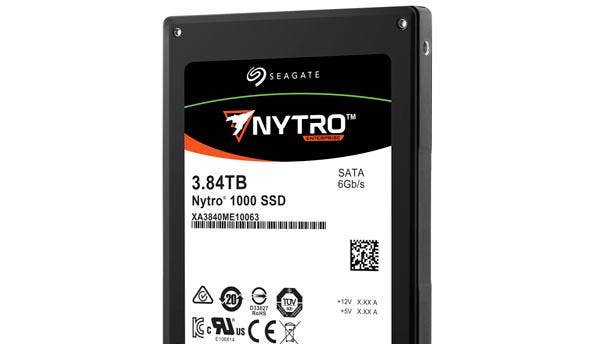
Seagate Nytro SSDs
Seagate launched new Nytro SSDs targeting read-intensive loads in enterprise cloud infrastructures. The Cupertino, Calif.-based company's new Nytro 1000 SATA and Nytro 5020 NVMe drives are expected to ship this fall. The Nytro 5020 features a 2.5-inch form factor, and comes with a PCIe Gen3 x4 NVMe interface. Capacities range from 800 GB to 7.6 TB, with sequential reads of up to 3,000 MBps and writes of 2,000 MBps. The Nytro 1000 SATA drives feature capacities from 240 GB to 3.84 TB, with random write performance of 55,000 IOPS.
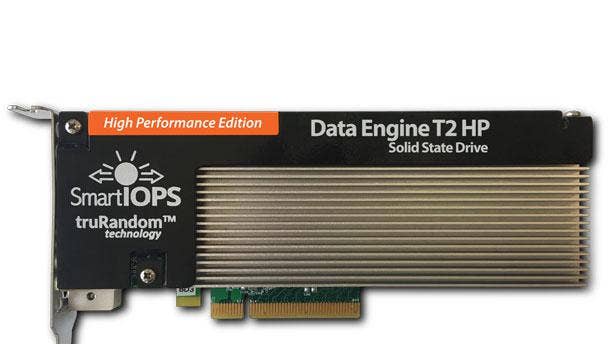
Smart IOPS Data Engine T2 HP PCIe NVMe SSD
Milpitas, Calif.-based SSD manufacturer Smart IOPS introduced its Data Engine T2HP SSDs. The Data Engine T2HP SSDs are slated to shortly be available in 3.2-TB and 6.4-TB capacities, and over 1.7 million random IOPS and 6.8-GBps bandwidth, along with 600,000 random sustained write IOPS, which the company said makes it applicable for use in high-performance computing environments.
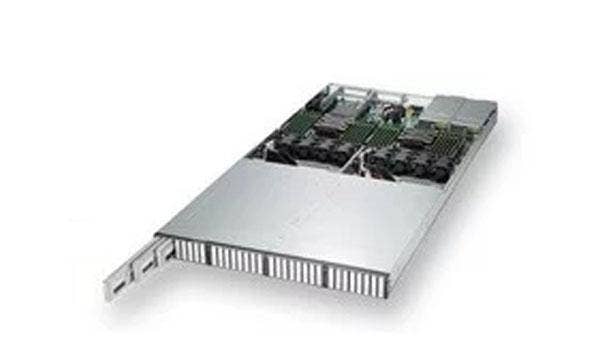
Super Micro 1U NVMe Systems
San Jose, Calif.-based custom-system builder Super Micro Computer unveiled a new 1U system that supports 1 PB of all-flash NVMe storage via 32 Intel EDSFF SSDs. First shown with partner Intel, the system features the new EDSFF form factor and supports front hot-swap accessibility to 32 EDSFF drives. The also support U.2 SSDs. Performance is up to 13 million IOPS and 52 Gbps. It is available both as storage server and JBOF configurations.
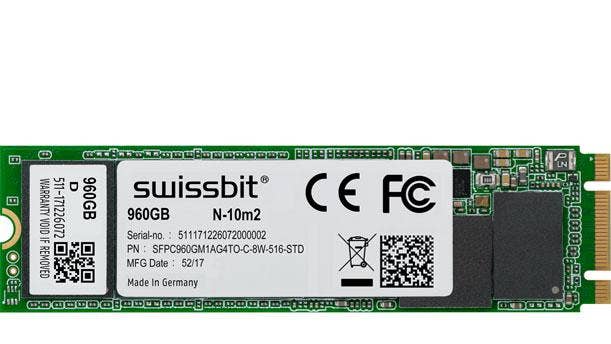
Swissbit N-10m2
A new two-lane NVMe PCIe M.2 module, the N-10m2, was launched in August by Bronschhofen, Switzerland-based Swissbit. Slated to be released in the near future, the N-10m22018 is an industrial temperature-grade 3D-NAND-based memory designed for optimized power consumption, and is especially suited for fanless systems, for embedded applications, or as a boot device for NetCom systems, the company said.
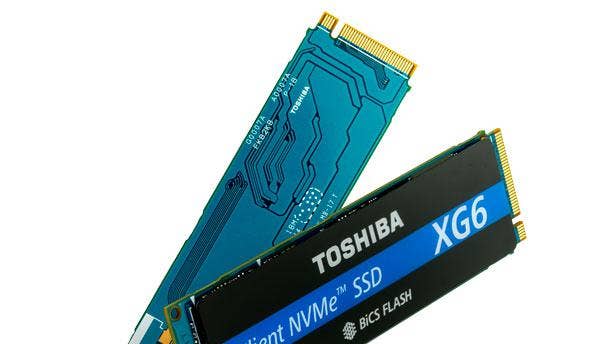
Toshiba Memory XG6 Series SSDs
Toshiba Memory America in July introduced a new lineup of SSDs based on the San Jose, Calif.-based company's 96-layer, BiCS Flash 3-D flash memory. The new XG6 series are the first SSDs to use this technology, and are targeted at client PCs, high-performance mobile PCs, embedded systems and gaming PCs, as well as data center environments for server boot drives, caching and logging, and commodity storage.
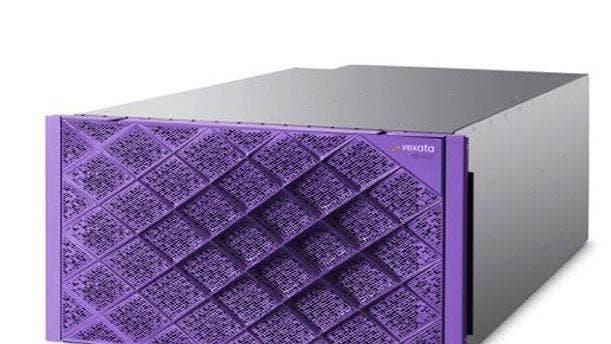
Vexata Operating System v3.5
The Vexata Operating System (VX-OS) v3.5, introduced in June, runs within San Jose, Calif.-based Vexata's VX-100 Scalable NVMe Arrays, adding NVMe-over Fabric (NVMe-oF) protocol support to deliver lower latencies using both NVMe flash and Intel Optane storage class memory. NVMe-oF support comes via 32-Gbps Fibre Channel or 40-Gbps Ethernet links. The VX-OS v3.5 release also supports new higher-density NVMe SSDs, letting the VX-100 to scale to over half a petabyte of capacity in a 6U frame. It is targeted at enterprise use cases including heavy analytics, transaction processing and machine learning.
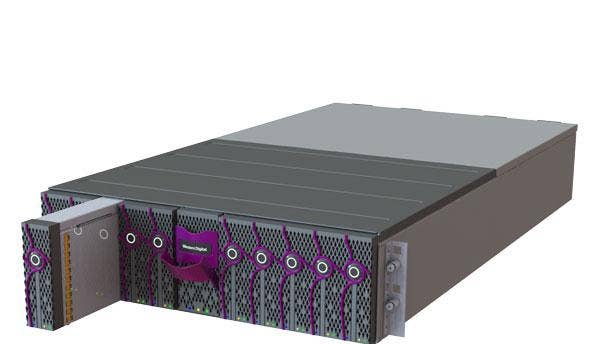
Western Digital OpenFlex
Western Digital unveiled a comprehensive set of open standards, architecture and products targeting high-scale private and public cloud data centers. In addition to introducing the new OpenFlex architecture and product line, the San Jose, Calif.-based company unveiled plans to deliver an API and key product specifications to the open community to create a complete foundation for open, software composable infrastructure targeting the orchestration and independent scaling of compute, storage and network resources.